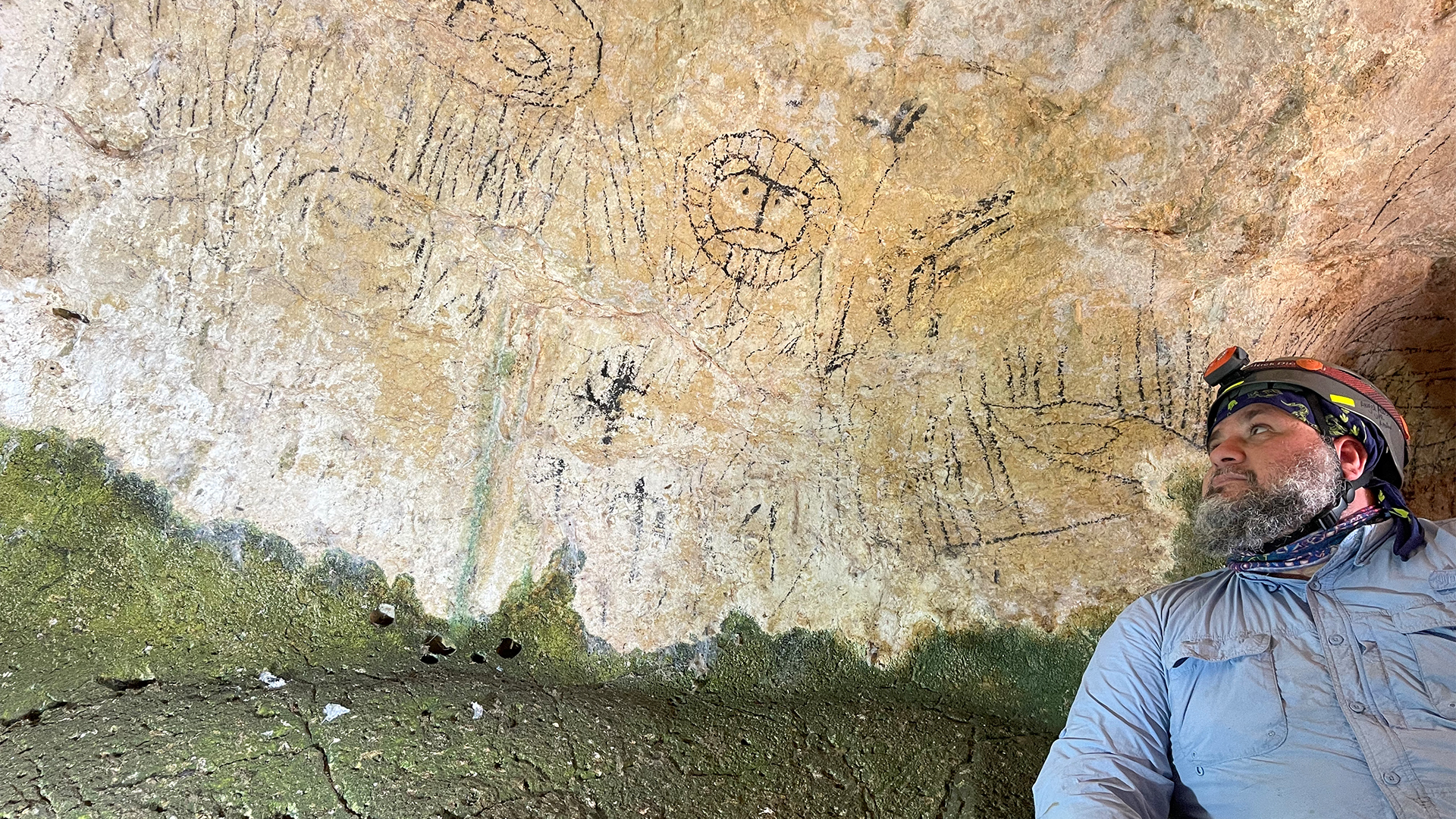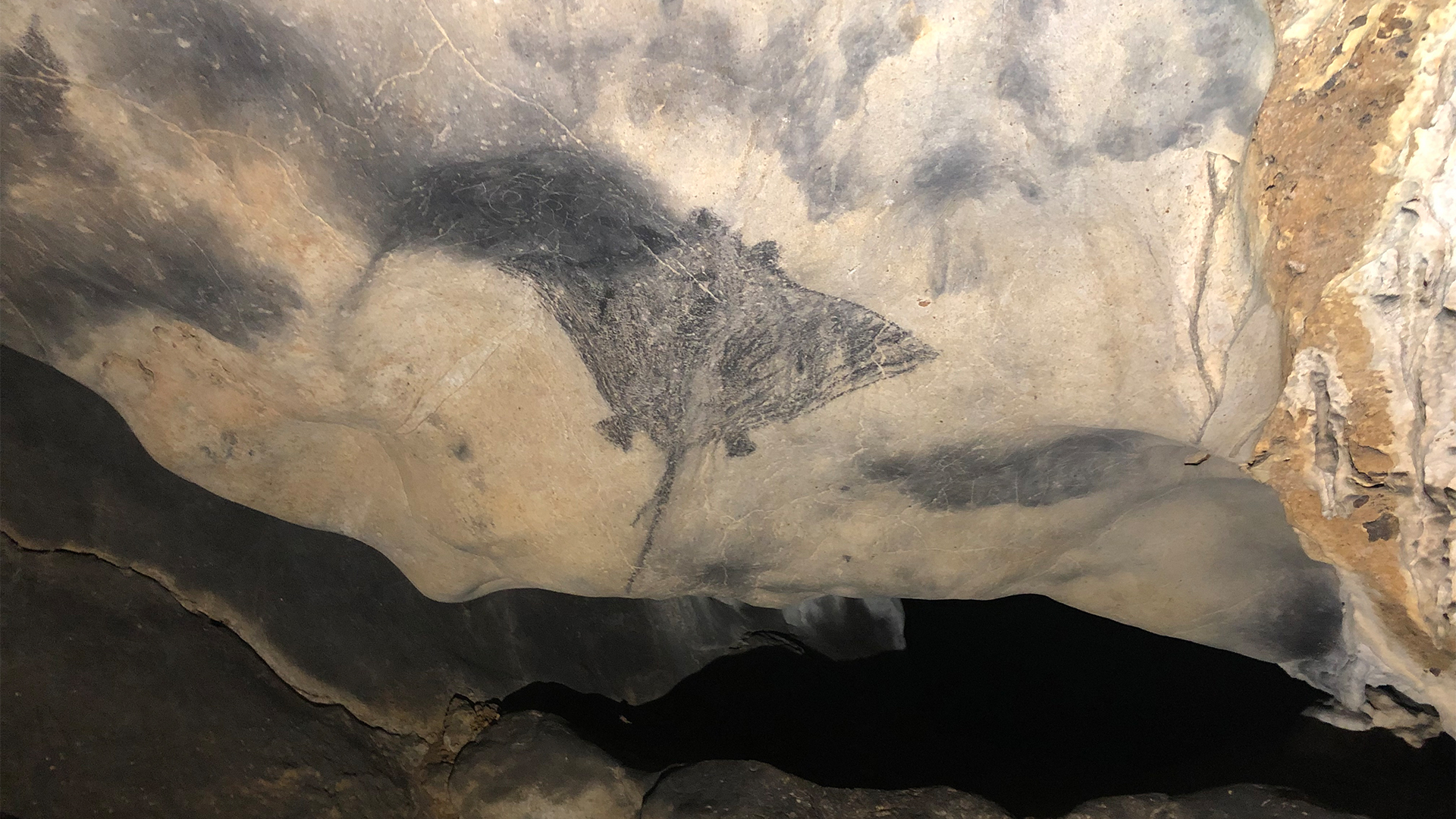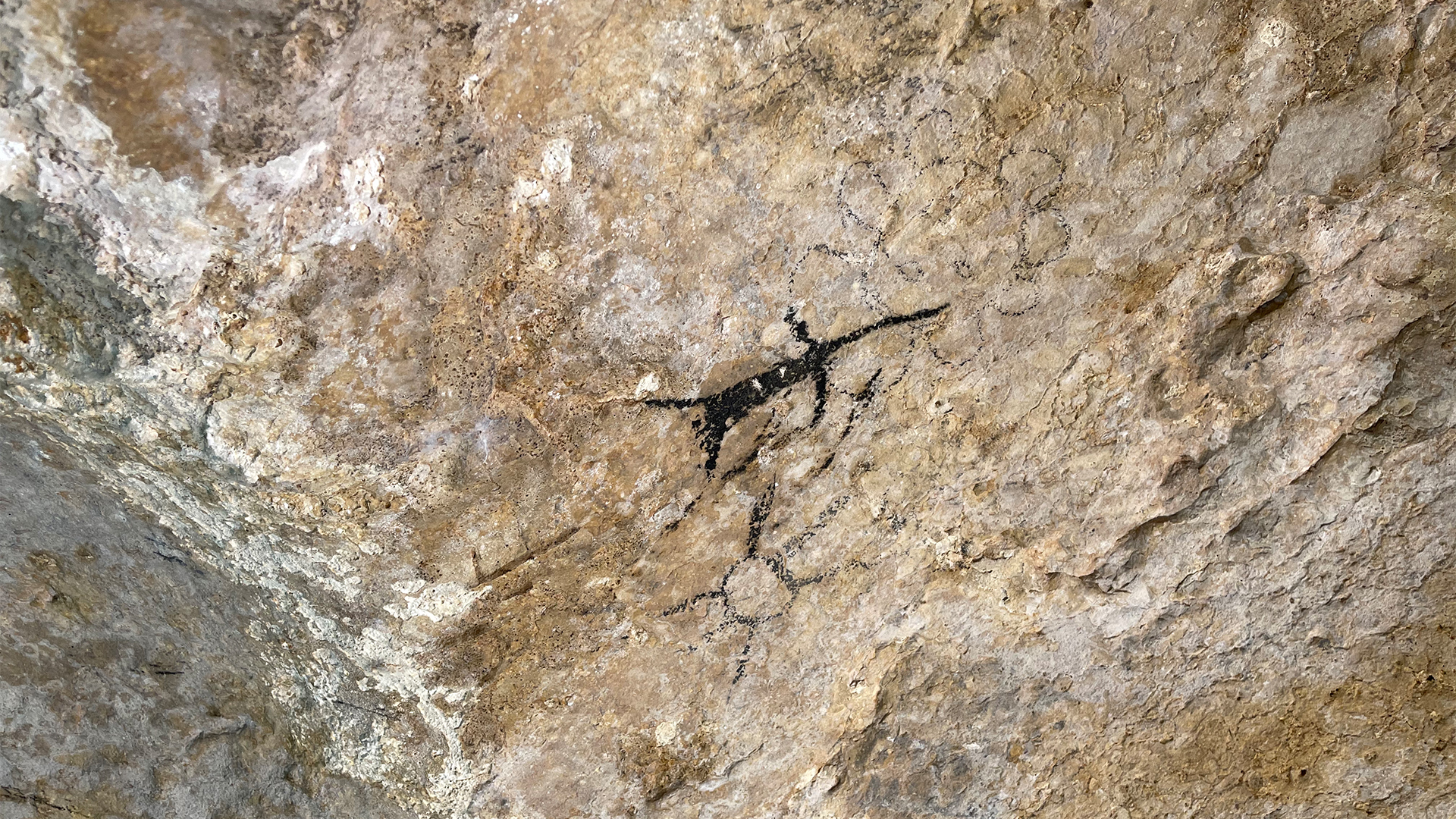500-year-old lion drawing in Puerto Rican cave may have been made by an enslaved African
There were no lions in 16th-century Puerto Rico — so was the cave drawing made by someone who'd actually seen one?

Cave art of a lion with a luscious mane drawn deep in a Puerto Rican cave about 500 years ago might have been created by an enslaved African, new research suggests.
"We have an image that looks like a lion — but in Puerto Rico, we don't have lions," project researcher Angel Acosta-Colón, an adjunct professor of geophysics at the University of Puerto Rico at Arecibo and an expert on the island's caves, said in a statement.
Instead, the drawing may have been made by someone who'd seen one in Africa before they were enslaved and taken to the island by the Spanish.
The idea was controversial, Acosta-Colón said. "But the age of the art is around [A.D.] 1500," he said. "We have data to corroborate what, I think, is one of the first [examples of] slave art in caves in Puerto Rico."
Acosta-Colón and Reniel Rodríguez Ramos, an archaeologist at the University of Puerto Rico at Utuado, have radiocarbon-dated some of the drawings in Puerto's Rico's caves to more than 2,000 years ago, according to unpublished research presented Oct. 18 at the Geological Society of America's annual conference in Pittsburgh.
Related: Warty pig is oldest animal cave art on record
Their discovery refutes a colonialist claim that people had lived on Puerto Rico for only a few hundred years before 1493, when the Italian navigator Christopher Columbus claimed the Caribbean island for his patrons in Spain.
Get the world’s most fascinating discoveries delivered straight to your inbox.
Ancient evidence
Determining the age of rock art is difficult. Substances like the mineral ochre often used to inscribe them can't be reliably dated, and some of the drawings are superimposed on others. Oftentimes, the age of cave art in Puerto Rico is estimated by linking it to nearby artifacts that have datable organic material, Acosta-Colón said.
To acquire more accurate dates, Acosta-Colón and Rodríguez took samples of 61 pigments used to make drawings in 11 caves on La Isla Grande, Puerto Rico's main island. The sampling destroys a tiny part of the drawing — between 1 and 2 milligrams (35 millionths to 7 millionths of an ounce) of the pigment — so the researchers were careful to sample only cave art that was commonly seen.
Many of the pigments turned out to be made of a black organic material, and radiocarbon dating revealed that the cave drawings were made in three phases: the earliest, of abstract and geometric shapes, dated to between 700 and 400 B.C.; the second phase, with simple shapes of human bodies, dated to between A.D. 200 and 400; and the third phase, with more detailed portrayals of humans and animals, started between 700 and 800.
The discovery of the earliest phase was key. "That is very important to us," Acosta-Colón said. "This proves that we were here [thousands] of years before the European invasion."
Meanwhile, the last phase continued through the period of European colonization after about 1500 and included pictures of horses, ships and other animals, such as the lion.
This feline was likely painted by someone who had actually seen a lion, possibly an enslaved person from Africa who had been brought to the island by the Spanish, Acosta-Colón said.
The cave drawings illustrate the history of the Puerto Rican people, Acosta-Colón said. "Normally we get the European history version of Puerto Rico, but this is direct evidence that the story in Puerto Rico didn't start with the European invasion; it started much, much earlier in history," he said.
He thinks further research could push back the record of human history on the island to around 7,000 years ago. Recent research found some of the human remains from Puerto Rico were up to 3,800 years old.
Alice Samson, an archaeologist at the University of Leicester in the United Kingdom, wasn't involved in the research but has studied cave art on Puerto Rico's Mona Island. "This really important work … sheds light on thousands of years of human interaction with caves throughout precolonial and historic eras," she told Live Science in an email.
Jago Cooper, a professor of art and archaeology at the University of East Anglia in the U.K., wasn't involved in the research but worked alongside Samson on Mona Island.
"Such advances will help untap the huge cultural reservoir of knowledge preserved in the spectacular cave-scapes across the Caribbean," he told Live Science in an email.
Editor's note: Updated at 5:25 p.m. EDT to fix the conversion from milligrams to ounces.
Tom Metcalfe is a freelance journalist and regular Live Science contributor who is based in London in the United Kingdom. Tom writes mainly about science, space, archaeology, the Earth and the oceans. He has also written for the BBC, NBC News, National Geographic, Scientific American, Air & Space, and many others.




